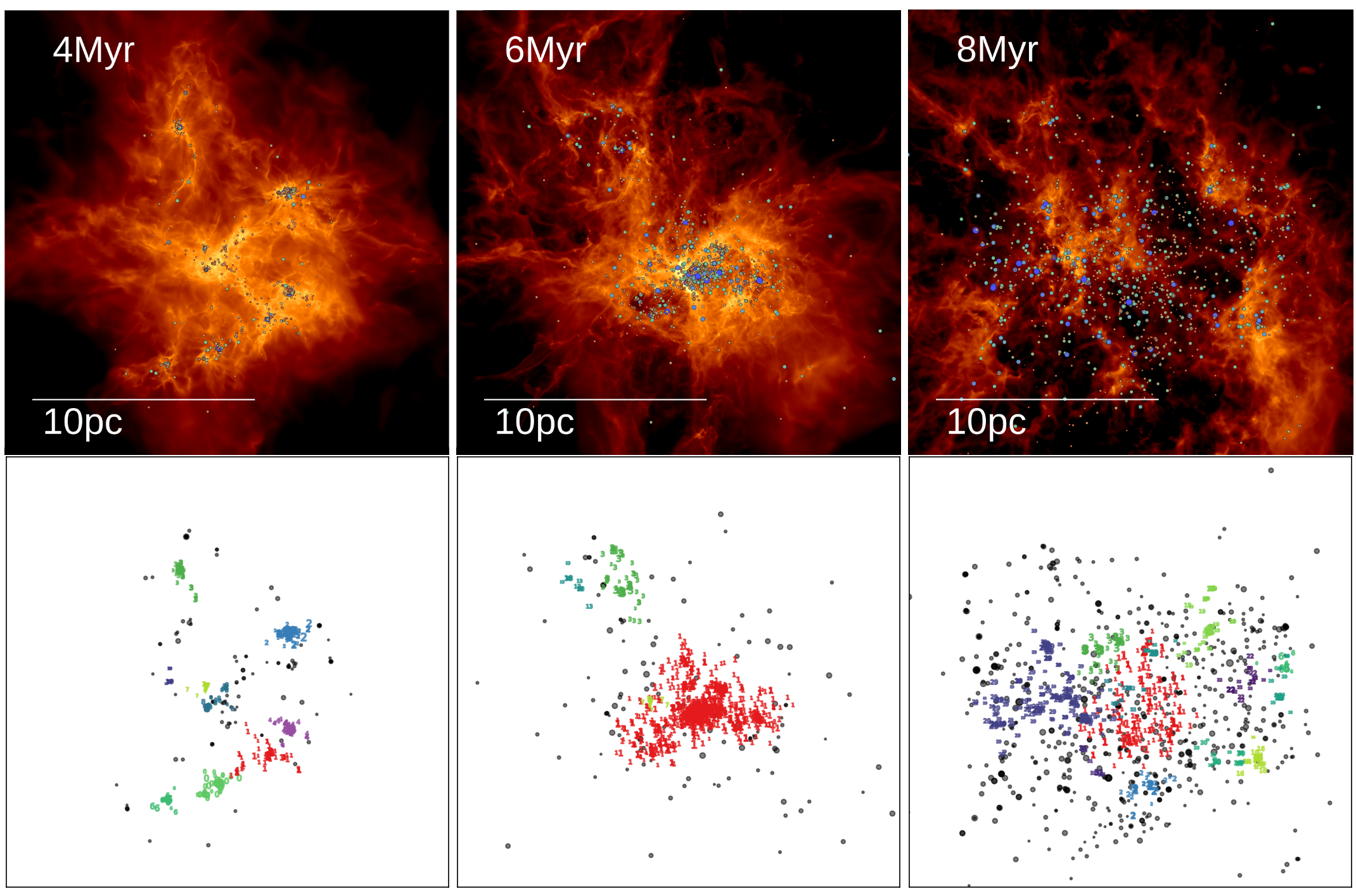
How does a star cluster form?
Stars form in dense, clustered environments, where feedback from newly formed stars (i.e., radiation, winds, jets) eventually ejects the gas, terminating star formation and leaving behind one or more star clusters. Using the STARFORGE simulations, it is possible to simulate this process in its entirety within a molecular cloud, while explicitly evolving the gas, radiation and magnetic fields and following the formation of individual, low-mass stars.
We find that individual star-formation sites merge to form ever larger structures, while still accreting gas. Thus clusters are assembled through a series of mergers. In observed clusters, massive stars are often found in the centers of clusters, this phenomenon is called mass segregation. It is possible that clusters don't start out mass egregated and gravitational interactions between stars cause more massive stars to migrate to the center of the cluster. Alternatively, massive stars may simply be born at the centers of stellar clusters, leading to inherent mass segregation. In our simulations the star-formation sites, which are the building blocks of clusters, start out mass segregated with one or a few massive stars at their center. As they merge the newly formed clusters maintain this feature, causing them to have mass-segregated substructures without themselves being centrally condensed. The merged clusters relax to a centrally condensed mass segregated configuration through dynamical interactions between their members, but this process does not finish before feedback expels the remaining gas from the cluster.
As gas is expelled from the cluster the gravitational forces holding it together weaken. In the simulated runs these forces become low enough that the cluster breaks up, creasting loose associations of stars. We expeimented with different initial conditions for our simulations and found that turbulent driving and a periodic cloud geometry can significantly reduce clustering and prevent gas expulsion. Meanwhile, the initial surface density and level of turbulence have little qualitative effect on cluster evolution, despite the significantly different star formation histories.